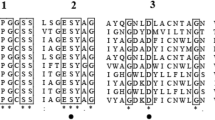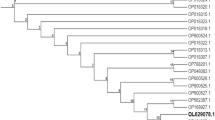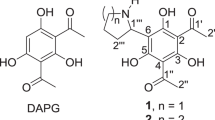Abstract
SAMPLES of baker's yeast that have undergone autolysis in presence of toluene or chloroform give an intense red colour reaction when boiled with diacetyl in hydrochloric acid, which is characteristic of compounds of the type1 —CH2NH—CO—NH2. Of the natural urea derivatives at present known, citrulline is the only one that gives a red, carbamido diacetyl reaction; urea, itself, gives a yellow colour ; allantoin and allantoic acid give varying in shades orange-pink, probably due to urea liberated under the conditions of the test ; cyclic ureides do not react chromatically. Hence, it was assumed at first that the yeast reaction was due to citrulline, originally present as a unit, or arising from arginine by desimidation.
This is a preview of subscription content, access via your institution
Access options
Subscribe to this journal
Receive 51 print issues and online access
$199.00 per year
only $3.90 per issue
Buy this article
- Purchase on Springer Link
- Instant access to full article PDF
Prices may be subject to local taxes which are calculated during checkout
Similar content being viewed by others
References
Fearon, W. R., Biochem. J., 33, 902 (1939).
Fearon, W. R., and Mitchell, D., Analyst, 57, 372 (1932).
Fearon, W. R., Analyst, 67, 130 (1942).
Fearon, W. R., Analyst, 71, 562 (1948).
Author information
Authors and Affiliations
Rights and permissions
About this article
Cite this article
FEARON, W., BOGGUST, W. Isolation of a Carbamido Acid from Autolysed Yeast. Nature 170, 372–373 (1952). https://doi.org/10.1038/170372b0
Issue Date:
DOI: https://doi.org/10.1038/170372b0
Comments
By submitting a comment you agree to abide by our Terms and Community Guidelines. If you find something abusive or that does not comply with our terms or guidelines please flag it as inappropriate.



